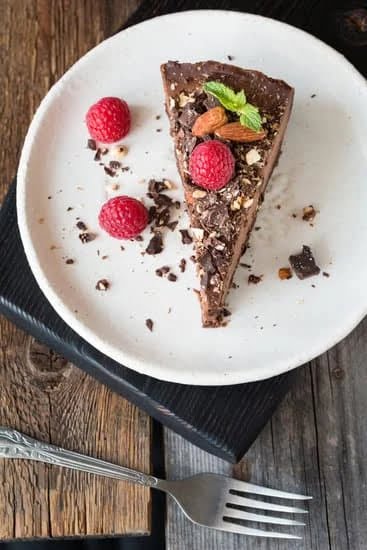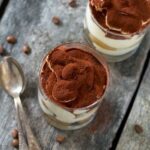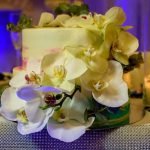A 2 tier cake is an impressive and eye-catching dessert that is perfect for special occasions such as weddings, birthdays, or anniversaries. The two layers add height and elegance to the cake, making it a focal point of any celebration.
Decorating a 2 tier cake is not only important for visual appeal but also for ensuring that the cake looks as delicious as it tastes. In this article, we will explore the essential steps and techniques for decorating a 2 tier cake to create a stunning and professional-looking dessert.
When it comes to decorating a 2 tier cake, having the right tools and ingredients is crucial. From offset spatulas and piping bags to quality baking ingredients and flavorful frosting, every element plays a role in creating a beautifully decorated cake. We will discuss the essential tools needed for decorating a 2 tier cake and explore the different types of ingredients required for both the cake itself and its frosting.
Preparing the cake layers and achieving perfectly smooth frosting are key aspects of decorating a 2 tier cake. We will provide step-by-step guides on baking, cooling, leveling, and assembling the cake layers, as well as detailed instructions on crumb coating and stacking the tiers. Additionally, we will discuss the pros and cons of using buttercream or fondant for decorating, along with techniques for applying each type of frosting to achieve professional-looking results.
Choosing the Right Tools and Ingredients
Decorating a 2 tier cake requires the use of specific tools and ingredients to ensure that the end result is not only visually appealing but also delicious. Some essential tools for decorating a 2 tier cake include offset spatulas, cake boards, piping bags and tips, a turntable, and a bench scraper. These tools are crucial for achieving smooth frosting, precise decorations, and secure stacking of the tiers.
Additionally, it’s important to have the right ingredients for both the cake and frosting. High-quality flour, sugar, eggs, butter, and flavorings are essential for baking a delicious cake, while confectioners’ sugar, butter or shortening, and flavor extracts are commonly used in frostings.
When it comes to choosing the right ingredients for your 2 tier cake, consider the flavors that complement each other well. For example, if you’re making a vanilla cake with raspberry filling, opt for a complementary frosting flavor such as vanilla or white chocolate.
It’s also important to consider any dietary restrictions or preferences of your guests when selecting ingredients. For those with nut allergies or dietary restrictions like vegan or gluten-free diets, be sure to choose suitable alternatives for ingredients.
In addition to selecting tools and ingredients based on functionality and taste, don’t forget about the aesthetic appeal of your decorations. Consider incorporating food coloring gels to achieve vibrant hues for your frosting or fondant decorations.
Edible glitter, sprinkles, and edible pearls can add a touch of glamour to your 2 tier cake design. With the right tools and ingredients at your disposal, you can bring your creative vision to life as you decorate your 2 tier cake following these guidelines on how to decorate a 2 tier cake.
Preparing the Cake Layers
When it comes to decorating a 2 tier cake, one of the most important steps is preparing the cake layers. Whether you are baking from scratch or using store-bought cake mix, ensuring that the cake layers are baked and cooled properly is crucial for successful decorating. Here’s a step-by-step guide on how to prepare the cake layers for your 2 tier masterpiece.
Baking and Cooling the Cake Layers
First and foremost, it’s essential to bake the cake layers to perfection. This means following the recipe carefully, measuring ingredients accurately, and keeping a close eye on the baking time. Once the cakes are baked, allow them to cool completely before handling them. This will ensure that they hold their shape when it comes time to assemble and decorate the tiers.
Tips for Leveling and Assembling
To create a stable base for decorating, it’s important to level the cake layers using a serrated knife or a cake leveler. This will remove any domed or uneven tops, allowing for smooth stacking of tiers. When assembling the tiers, use a sturdy cake board between each layer to provide support. Additionally, consider using dowels or skewers to further secure the tiers in place.
Now that you know how to properly prepare your cake layers, you’re one step closer to creating a stunning 2 tier cake masterpiece. With careful attention to detail and precision in this stage of the process, you’ll set yourself up for success when it comes time to add those beautiful decorative elements.
Remember that patience and precision are key when preparing your cake layers for decorating. Taking your time with this step will pay off in the end when you have a solid foundation for showcasing your creativity and skill in decorating a 2 tier cake.
Crumb Coating and Stacking
When it comes to decorating a 2 tier cake, the crumb coating and stacking process is crucial for creating a smooth and professional-looking finish. This section will provide detailed instructions on how to crumb coat the cake layers, as well as tips for properly stacking and securing the tiers.
Detailed Instructions on Crumb Coating
Before applying the final layer of frosting or fondant, it is essential to crumb coat the cake layers. To do this, start by spreading a thin layer of frosting over the entire cake to seal in any crumbs. Use a bench scraper or offset spatula to smooth out the frosting and create an even surface. Chill the crumb-coated cake in the refrigerator for about 10-15 minutes before applying the final layer of frosting or fondant.
Stacking and Securing the Tiers
Once your cake layers are crumb coated and chilled, it’s time to stack them to create that beautiful 2 tiered effect. Begin by placing a dollop of frosting or buttercream on the center of your bottom tier, then carefully place the second tier on top. Use dowels or straws inserted into the bottom tier to help support the weight of the top tier.
This will prevent any shifting or collapsing of the cake layers. Make sure your tiers are level and use a ruler to ensure they are stacked evenly.
By following these steps for crumb coating and stacking, you can achieve a flawless finish that serves as a great foundation for adding decorative elements such as piping designs, fondant decorations, fresh flowers, or edible embellishments. With attention to detail and practice, you will soon master how to decorate a 2 tier cake like a pro.
Buttercream or Fondant
When it comes to decorating a 2 tier cake, choosing the right frosting is crucial in achieving the desired look and style for your creation. Two popular options for decorating a cake are buttercream and fondant, each with its own unique qualities and application techniques.
Buttercream frosting is a classic choice for decorating cakes due to its smooth and creamy texture. It is made from butter, confectioners’ sugar, and flavorings such as vanilla or chocolate. One of the advantages of using buttercream is its versatility in creating various designs and decorations on a cake.
From delicate piping to intricate floral patterns, buttercream allows for endless creativity in decorating a 2 tier cake. However, it’s important to note that buttercream may not hold up as well in hot or humid conditions, so consider the environment where the cake will be displayed.
On the other hand, fondant offers a sleek and polished finish that can give your 2 tier cake a more refined and professional appearance. Fondant is a pliable icing made from sugar, water, and gelatin that can be rolled out into thin sheets to cover the entire cake or sculpted into decorative shapes and accents.
While fondant provides a flawless canvas for intricate detailing and elaborate designs, some may find its taste to be overly sweet or less palatable compared to buttercream. Additionally, working with fondant requires precision and patience to achieve smooth edges and flawless results.
Ultimately, the decision between using buttercream or fondant comes down to personal preference and the specific design aesthetic you wish to achieve for your 2 tier cake decoration. It’s also worth considering how the environmental factors may affect your chosen frosting type when making your decision on how to decorate a 2 tier cake. Regardless of which option you choose, both buttercream and fondant offer endless possibilities for creating stunning decorative elements on your beautiful 2 tier cake.
Decorating Techniques
When it comes to decorating a 2 tier cake, there are numerous techniques that can be used to create a stunning and visually appealing design. Whether you’re a novice baker or an experienced decorator, mastering these techniques is essential for achieving professional-looking results. Here are some key decorating techniques to consider when working on a 2 tier cake:
- Piping Buttercream Flowers and Designs: One of the most popular and versatile ways to decorate a cake is by using buttercream frosting to pipe intricate designs and flowers. To achieve this, you will need piping bags and various tips in different shapes and sizes.
Start by practicing basic piping techniques such as dots, lines, and rosettes before moving on to more complex floral designs. With a little patience and practice, you can create beautiful buttercream decorations that will adorn your 2 tier cake. - Using Fondant for Intricate Decorations: Fondant is another popular choice for creating elaborate decorations on cakes. It offers a smooth and polished finish that can be molded into various shapes and designs. To work with fondant, you’ll need rolling pins, shaping tools, and food coloring for tinting the fondant as desired. From detailed figurines to geometric patterns, there’s no limit to what you can achieve with fondant decorations on a 2 tier cake.
- Incorporating Textured Techniques: Adding texture to your cake design can elevate its visual appeal. Consider using stencils to create unique patterns on the surface of the cake or experimenting with edible paints for watercolor effects. Another option is to use edible luster dust or glitter for a touch of sparkle.
Mastering these decorating techniques will give you the creative freedom to bring your vision to life when working on a 2 tier cake. With the right tools and practice, you can create an eye-catching masterpiece that will impress your guests at any special occasion such as weddings, birthdays, or anniversaries.
Adding Finishing Touches
After you have completed the main decorating techniques on your 2 tier cake, it’s time to add the finishing touches that will elevate the overall design. One popular option is to incorporate fresh flowers into the cake design, which can add a touch of elegance and natural beauty.
When using fresh flowers as cake decorations, it’s crucial to ensure that they are organic and free from pesticides. It’s recommended to use flowers such as roses, peonies, or lavender, but always make sure that the flowers are safe for consumption.
Another way to enhance the look of your 2 tier cake is by incorporating edible embellishments such as sprinkles, edible pearls, or gold leaf. These decorative elements can add texture and visual interest to the cake, making it even more appealing. Whether you decide to go for a minimalist or elaborate design, these extra touches can take your cake decoration to the next level.
To ensure that your 2 tier cake looks visually cohesive and appealing, it’s important to step back and assess the overall design after adding finishing touches. Consider factors such as color balance, symmetry, and proportion. Pay attention to how all the elements come together and make any necessary adjustments to achieve a harmonious look.
| Decorative Elements | Benefit |
|---|---|
| Fresh Flowers | Adds elegance and natural beauty |
| Edible Embellishments | Adds texture and visual interest |
| Cohesive Design Assessment | Ensures a harmonious look |
Troubleshooting Tips
Even with careful planning and expert technique, decorating a 2 tier cake can sometimes come with unexpected challenges. Whether you’re a beginner or experienced baker, it’s important to be prepared for potential mishaps and know how to troubleshoot them.
One common issue when decorating a 2 tier cake is the frosting not adhering properly to the cake layers. This can result in a lopsided or uneven appearance. To fix this problem, make sure to lightly brush the cake layers with simple syrup before applying the frosting. The moisture from the syrup will help the frosting stick better and create a smooth, even finish.
Another frequent problem many encounter is the fondant cracking or tearing while being applied to the cake. This can be frustrating, especially when working on intricate designs. To prevent this, knead the fondant thoroughly before rolling it out to ensure it’s pliable and smooth. If you do experience cracking or tearing, simply use a small amount of shortening on your fingertips to gently rub and smooth out the imperfections.
Lastly, air bubbles trapped under the fondant can create unsightly bulges on the surface of your cake. To avoid this issue, use a fondant smoother or gently press on the surface of the fondant with your palms to release any trapped air. Then carefully smooth out any resulting wrinkles using your hands or a fondant tool.
By knowing how to address these common decorating issues, you can tackle them with confidence and ensure that your 2 tier cake turns out as beautiful as you envisioned.
| Troubleshooting Tips | How-To |
|---|---|
| Frosting not adhering properly | Brush cake layers with simple syrup before applying frosting |
| Fondant cracking or tearing | Knead fondant well before rolling it out; use shortening to smooth out imperfections |
| Air bubbles under fondant |
Conclusion
In conclusion, decorating a 2 tier cake is a fun and rewarding process that allows you to showcase your creativity and baking skills. By following the right techniques and using the proper tools and ingredients, you can create a stunning centerpiece for any special occasion.
Whether you choose to use buttercream or fondant, there are endless possibilities for designing and personalizing your cake to fit any theme or event. The key is to have patience and enjoy the decorating process, as it truly is an art form.
Remember to take your time when preparing the cake layers, ensuring they are level and properly stacked before moving on to the frosting stage. Whether you opt for buttercream or fondant, each type of frosting offers its own unique benefits and challenges, so be sure to choose the one that best suits your design vision and skill level. From piping buttercream flowers to creating intricate fondant decorations, there are countless ways to make your 2 tier cake truly stand out.
As with any creative endeavor, there may be some troubleshooting along the way, but don’t be discouraged. If mistakes happen, there are always ways to salvage a decorating mishap or adjust your design to still achieve a beautiful result.
Ultimately, decorating a 2 tier cake should be an enjoyable experience, so don’t hesitate to experiment with different techniques and let your imagination run wild. With practice and patience, you’ll soon become a master at creating stunning 2 tier cakes that will delight both the eyes and taste buds of everyone who sees them.
Frequently Asked Questions
How Do You Structure a Two Tier Cake?
To structure a two-tier cake, the bottom tier should be placed on a cake board that is the same size as the tier. Then, dowels should be inserted into the bottom tier to support the weight of the top tier.
How Do You Stack Two Layer Cake?
Stacking a two-layer cake involves placing one layer on a sturdy base or cake board and then carefully positioning the second layer on top of it. The layers can be secured with frosting or dowels for stability.
Do You Put Cake Boards Between Tiers?
Yes, it is recommended to put cake boards between tiers to provide support and prevent the weight of the upper tiers from compressing and damaging the lower ones. This also makes it easier to lift off each tier for serving.

Welcome to our cake decorating blog! My name is Destiny Flores, and I am the proud owner of a cake decorating business named Cake Karma. Our mission is to provide delicious, beautiful cakes for all occasions. We specialize in creating custom cakes that are tailored specifically to each customer’s individual needs and tastes.





